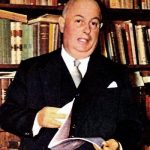
We all link the Energy-Mass equation (E=mc2) to Albert Einstein, but this equation was first published in 1890 by Oliver Heaviside, then in 1900 by Henri Poincare and in 1903 by the Italian Olinto De Pretto, who registered it at the Regio Instituto di Scienze and then published it in a paper together with the senator and astronomer Giovanni Schiaparelli. It seems that the Energy-Mass equation reached Einstein through his father Hermann who was the owner of the “Privilegiata Impresa Elettrica Einstein”, working in the development of street lighting in Verona together with Olinto De Pretto. But the E=mc2 equation had a major problem, it did not take into account motion, the momentum, which is also a form of energy. Einstein solved the problem by adding the momentum, and publishing in 1905 the extended equation in his Special Relativity. The energy/momentum/mass equation is a double order equation (E2=m2c4+p2c2) and has two solutions for energy: a positive time solution, which describes energy that diverges from the past to the future, and a negative time solution, which describes energy that diverges backward from the future into the past. Since we move forward in time, the backward in time diverging energy turns into a converging force. In 1905 energy flowing backward in time was considered impossible. Einstein suggested to remove the momentum from the equation and go back to the E=mc2, which always has only a forward in time solution. He could do this since the speed of physical bodies is practically nil compared to the speed of light. Everything worked fine until 1924 when Wolfgang Pauli discovered that the spin of subatomic particles (which is a momentum) nears the speed of light. Quantum mechanics requires the extended energy/momentum/mass equation, with its inconvenient backward in time solution! The first equation that combines Special Relativity and Quantum Mechanics dates back to 1926 and was formulated by Klein and Gordon. This equation has two solutions: a backward in time (advanced waves) and a forward in time (delayed waves). The advanced waves solution was rejected, since it implies retrocausality which was considered impossible. The second equation was formulated in 1928 by Paul Dirac. Dirac tried to solve the paradox of the backward in time solution, but he found the electron and the neg-electron (now named positron) that propagates backward in time. Positrons were observed experimentally in 1932 by Carl Andersen. Shortly after Pauli wrote an essay with the famous psychologist Carl Gustav Jung. Starting from the dual solution of the fundamental equations he posits that we live in a supercausal world, with causes acting from the past and synchronicities acting from the future. In 1933 Heisenberg, who had a strong charismatic personality and a leading position in the institutions and academia, declared the forward in time solution impossible. From that moment, anyone who ventures into the study of the backward in time solution is discredited, loses the academic position, the ability to publish and talk at conferences.
Fantappiè was a mathematician, not a physicist, and he could not accept that Heisenberg had rejected half of the solutions of the fundamental equations. In 1941, while listing the properties of the forward and backward in time solutions, Fantappiè discovered that the forward in time solution is governed by the law of entropy (the word entropy comes from the combination of the Greek words en=diverging, tropos=tendency), whereas the backward in time solution is governed by a symmetrical law that he named syntropy (from the combination of the Greek words syn=converging and tropos=tendency). Entropy is the tendency towards energy dissipation, the famous second law of thermodynamics, also known as the law of heat death or disorder. On the contrary, syntropy is the tendency towards energy concentration, increase in differentiation, formation of structures and organization. Fantappiè recognized in these properties the mysterious qualities of life. In 1942 he wrote a booklet titled “The Unified theory of the physical and biological world,” in which he suggests that the physical/material world is governed by the law of entropy, whereas life is governed by attractors that retroact from the future and follow the law of syntropy. Since the future is invisible, we live in a world which is half visible and physical and half invisible and immaterial. Physical energy belongs to the visible side of reality, whereas vital energy belongs to the invisible side. Life combines the visible with the invisible, causality with retrocausality. This supercausal paradigm leads to a new type of knowledge which has incredible potentialities and applications.
Entropy and syntropy are complementary concepts: in other words, where it is possible to measure a level of entropy there is a complementary level of syntropy.
Work on developing the Theory of Syntropy is being continued Ulisse di Corpo and Antonella Vannini – read further in Syntropy: The Spirit of Love
